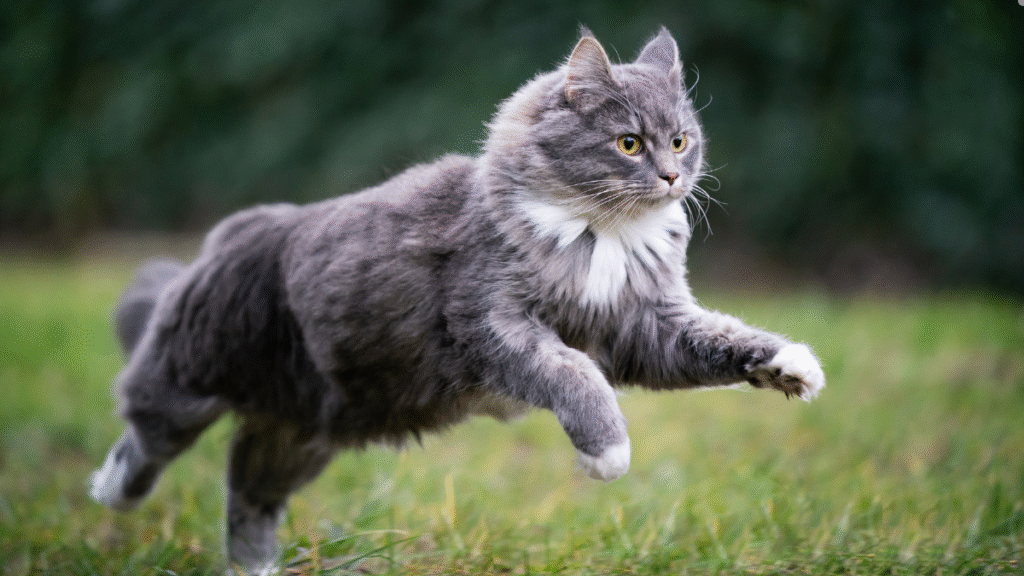Clicker training is one of the most effective, humane, and enjoyable ways to train your cat. Contrary to popular belief, cats are not “untrainable.” In fact, they are intelligent, curious, and highly motivated by rewards—traits that make them ideal candidates for clicker training.
In this complete guide, you’ll learn everything you need to know about how to clicker train your cat like a pro—from the tools you’ll need to shaping complex behaviors step by step.

What Is Clicker Training?
Clicker training is a form of positive reinforcement training that uses a small device called a clicker to mark desired behaviors. The concept is simple: when your cat does something you like, you “click” and immediately reward them with a treat or something else they love (like playtime or petting).
Over time, your cat learns that the sound of the click means they’ve done something right and that a reward is coming. The click acts as a precise marker—a consistent sound that helps your cat understand exactly which behavior earned the treat. This timing is crucial for effective learning.
Why Clicker Train a Cat?
Many cat owners assume that cats are too independent or stubborn to train, but that’s a myth. Cats can learn just as well as dogs when training is based on patience and positive reinforcement. Here’s why clicker training is worth trying:
-
Builds trust and strengthens your bond – Cats respond better to gentle, reward-based methods. Clicker training helps your cat see you as a source of good things.
-
Improves behavior – You can use clicker training to reduce unwanted behaviors (like scratching furniture or jumping on counters) by teaching better alternatives.
-
Provides mental stimulation – Training gives your cat a “job” to do, which prevents boredom and reduces destructive habits.
-
Helps with handling and vet visits – You can teach your cat to tolerate grooming, nail trims, carriers, and even vet exams more calmly.
-
It’s fun! – Watching your cat learn tricks like high fives, spins, or fetching a toy is incredibly rewarding.
What You’ll Need for Clicker Training
Before you start, gather a few basic tools:
-
A Clicker: You can find inexpensive clickers at pet stores or online. If your cat is sensitive to sound, choose a quieter version or use a pen that clicks softly.
-
Treats: Use small, high-value treats your cat loves. Soft treats, tiny bits of chicken, tuna flakes, or commercial cat training treats work great.
-
A Training Space: Choose a quiet, distraction-free room where your cat feels safe and relaxed.
-
Optional Tools: A target stick (or even a chopstick), a treat pouch, and a mat or perch for teaching “station” behaviors can be helpful as you progress.

Step 1: Charging the Clicker
Before you can start teaching tricks, your cat needs to understand that the click means a reward is coming. This process is called “charging the clicker.”
Here’s how to do it:
-
Sit with your cat in a calm environment.
-
Press the clicker once and immediately give your cat a treat.
-
Repeat this 10–15 times in a short session.
Your goal is for your cat to make the connection: click = treat. You’ll know it’s working when your cat starts looking expectantly for a treat right after the click. Once this association is established, you can start shaping behaviors.
Step 2: Start With Simple Behaviors
Begin with easy, natural behaviors your cat already performs. This builds confidence and sets a positive tone.
Try these beginner behaviors:
-
Touch (Target Training):
Hold out your finger or a target stick near your cat’s nose. When they sniff or touch it, click and reward. Over time, you can use this to guide your cat to different spots or teach tricks like “spin” or “jump.” -
Sit:
Wait for your cat to naturally sit down. The moment their bottom touches the floor—click and treat. After a few repetitions, add a verbal cue like “sit” just before they do it. -
Come When Called:
Call your cat’s name or make a consistent sound (like a whistle or tongue click). When they come toward you, click and reward generously. This is one of the most useful behaviors for real-life situations.

Step 3: Use Shaping to Teach Complex Behaviors
Once your cat understands the basics, you can use shaping to teach more complex actions. Shaping means rewarding small steps toward the final behavior.
For example, if you want to teach your cat to high five:
-
Wait for your cat to lift their paw slightly—click and reward.
-
Next time, wait for a higher lift before clicking.
-
Gradually move your hand closer, rewarding each time they touch it with their paw.
-
Once they’re consistently offering the paw, add the verbal cue “high five.”
Shaping requires patience, but it’s one of the best ways to teach cats creative tricks while keeping sessions fun.
Step 4: Keep Training Sessions Short and Positive
Cats learn best with short, engaging sessions—about 3–5 minutes each. End every session on a positive note, ideally after your cat successfully performs a behavior and earns a reward.
Some additional tips for successful training sessions:
-
Be patient and consistent. Cats progress at different speeds, so don’t rush or get frustrated.
-
Use high-value rewards for more challenging tasks to keep motivation strong.
-
Avoid punishment. Never scold or force your cat to do something. Negative experiences can break trust and make your cat reluctant to participate.
-
Train when your cat is alert, not sleepy or full. A hungry, curious cat is more interested in treats and play.
Step 5: Add Cues and Fade the Clicker
Once your cat consistently performs a behavior, start introducing a verbal cue or hand signal just before the behavior. For example, say “sit” before your cat sits, then click and treat when they do.
Over time, your cat will learn to respond to the cue alone. Eventually, you can phase out the clicker and simply use praise or treats to maintain the behavior.
Troubleshooting Common Challenges
Even with the best techniques, you might run into a few obstacles. Here’s how to handle common issues:
-
My cat ignores the clicker.
Make sure your cat understands that the click means a treat. Try higher-value rewards like bits of chicken or tuna. -
My cat walks away mid-session.
Keep sessions short and engaging. End before your cat loses interest—cats have shorter attention spans than dogs. -
My cat is afraid of the clicker sound.
Try a quieter clicker or muffle it with a towel. You can also use a soft pen click or a word like “yes” as a marker instead. -
My cat doesn’t perform the behavior.
Be patient. Break the behavior down into smaller steps and reward progress, not perfection.
Advanced Clicker Training Ideas
Once your cat has mastered the basics, you can teach more impressive and practical tricks:
-
High Five or Shake Paw – A classic and adorable trick.
-
Spin in a Circle – Use target training to guide your cat in a full circle.
-
Jump Through a Hoop – Start with the hoop on the ground and gradually raise it.
-
Fetch a Toy – Click and reward when your cat brings an item closer to you.
-
Go to Mat (Station Training) – Teach your cat to go to a specific spot on cue—great for mealtimes or when guests arrive.
-
Enter Carrier Willingly – Use the clicker to make carrier training stress-free.
These advanced tricks not only impress visitors but also make everyday life smoother and more enjoyable.

The Science Behind Clicker Training for Cats
Clicker training is based on operant conditioning, a psychological principle discovered by B.F. Skinner. When an animal performs a behavior that results in something positive, they’re more likely to repeat it. The clicker acts as a secondary reinforcer—a signal that bridges the gap between the behavior and the reward.
This method works for all kinds of animals—from dolphins to dogs to parrots—and cats are no exception. Because the click is always paired with a treat, it becomes a reliable and powerful communication tool.
Final Thoughts
Clicker training your cat isn’t just about teaching tricks—it’s about creating a language of trust and understanding between you and your feline companion. By focusing on rewards, clear communication, and patience, you’ll find your cat eager to participate and even initiating learning on their own.
Start small, celebrate progress, and keep sessions fun. Whether you’re teaching your cat to come when called, high five, or walk on a leash, you’re doing more than training—you’re enriching their life and deepening your bond.
- 5 Cheap Alternatives To Dog Training Equipment - November 12, 2025
- Homemade Calming Spray To Help Dogs During Training - November 12, 2025
- 7 DIY Dog Training Tools You Can Make From Household Items - November 12, 2025
